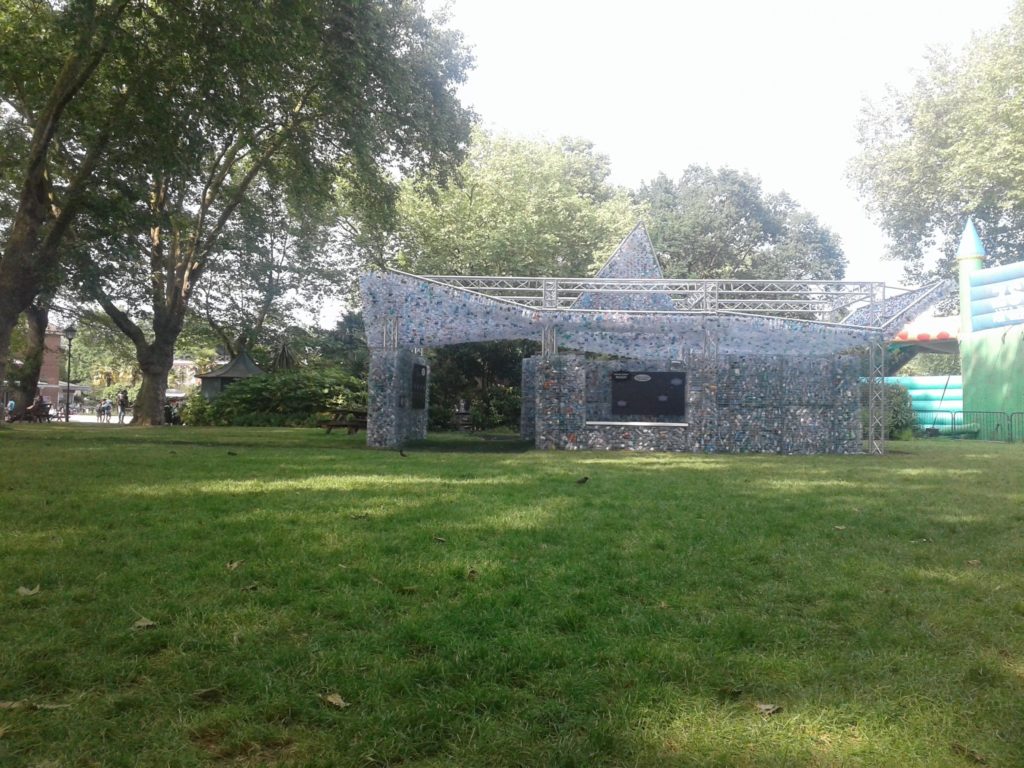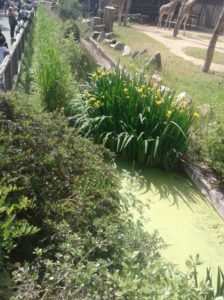
Location
London NW1 4RY, UK (This is the top end of Regent’s Park by the Wellcome Collection and Camden Town.)
Prices
These prices are in British Pounds:
Advanced Purchase:
Adult: £27.00
Child (3-15): £17.55
Child under 3: Free
Concession (Senior 65+, Student, and disabled person): £24.30
Carer of disabled adult: Free
Price at gate:
£30.00
£19.50
Free
£27.00 .
Free
Ease of Access:
The London Zoo is located at the top end of Regent’s Park accessed only by a gate at the top end. This means if you are a silly bugger like me, you walk up through Regent’s park, past the vast majority of the zoo, then you find the door. It is a pretty walk but a long one. There are definitely smarter ways to do it. One such way is to enter through Camden. This is a much shorter walk than what I did. I did not drive nor arrive by public transit so I cannot speak to parking or buses.
The Zoo itself is largely accessed by slopes and ramps. There are some stairs such as by the lion enclosure but they are accompanied by a ramp or lift. The biggest access issue comes from the sheer size of the zoo. Some enclosures have woodchips or other substrate as walkways. This is to simulate the natural habitat of the animals but it might pose hazard to wheels or feet.
NOTE about Assistance Dogs: When I went to the zoo they were not allowed but through a partnership with Guide Dogs of London the Zoo now welcomes ADUK accredited assistance dogs under the Terms and Conditions. If you have further questions please contact generalenquiries@zsl.org for more information.
Tour Notes

I spent 16 hours in the London zoo – two 8-hour days. This was for my Masters: I was observing the zoo and how well sustainability was conveyed to the audience. They were long days but I feel like I have a better understanding of the ebb and flow of the London Zoo than I do a number of the other museums that I have reviewed just because I spent about 8 times as long inside then your average guest. People normally visit cultural attractions for between 2 and 3 hours. As mentioned in the Ease of Access section, you enter through the north end of the zoo, it opens at 10am and the line gets long fast. You can (and should) pre-book your tickets for a bit of a discount and a quicker pass through the line. Take the map. It’s free.
There are no plastic water bottles for sale in the London Zoo. Instead of plastic the zoo sells canned water. There is also a water bottle refill station right by the penguins. You are going to need something to drink; there is a lot of travelling to get from one exhibit to another and it is almost entirely out-of-doors. I recommend bringing a water bottle. The environmentalist in me says a reusable water bottle but if you don’t have one don’t sweat it: you are still re-using a bottle even if it isn’t made for that purpose.

What to do in the Zoo?
Keeper talks happen daily you can look them up online before you go or look on the map you picked up at the door. It is impossible to get to every keeper talk: the ones close together in time are almost always on opposite sides of the zoo. The only exception is the Meerkat and Otter talks which are almost next door to each other.
There are also endless interesting things to see. If you are into aquatic life there is an aquarium, or the penguins. There are animals from all over the world! Some people think erroneously that accredited zoos keep animals purely to make money. This is far from the case! Accredited zoos actively work to preserve endangered species both through breeding programs and environmental projects. Here is an example of a speices that the London Zoo helped reintroduce: the Partula Snail. You can find Partula snails and their conservation story in the B.U.G. House.
What if I need a Break?
If it is a nice day out like it was for my two visits there will be a lot of people at the zoo. It won’t feel too crowded outside of the shows, talks, and food venders. This is because the wide paths accommodate everyone and there are plenty of trees and buildings to cut down the noise. If you need a break, however, I recommend heading for the butterfly house. There is soft music playing and people move carefully so as to not squish the butterflies. I spent about two hours in the butterfly house over the 16 hours total. If you are not a fan of butterflies you might try the lemur enclosure. As lemurs are fearless and curious there is always a keeper on hand to help keep people and animals out of trouble.
There are numerous places to get food while at the zoo including ice cream trucks and sit-down restaurants. You can also picnic almost anywhere! The only places I saw where you couldn’t bring uncovered food and drink were the enclosures themselves. The restaurants can be loud and crowded making maneuvering difficult but once you have your treat finding somewhere to consume it is fairly easy.
There are early openings for autistic children, these are not scheduled regularly but the zoo does make an effort to announce them well in advance. There are wheelchairs available for a £25 deposit at the gate. You get your deposit back when you return the chair.
London Zoo is active on social media under the handle ZSLLondonZoo. They are not the quickest at answering questions on social media but they post regularly and have a fairly comprehensive website. Just make sure you are on the ZSL London pages, as ZSL also runs Whipsnade Zoo. You can also call them or email them.
Links to London Zoo’s Accessibility pages.
ZSL London Zoo Accessibility Here is your one-stop shop for information for accessible visits to the London Zoo.
ZSL London Zoo Map PDF I suggest getting the map at the door as it is a physical paper which I find easier to understand. If you prefer digital information this PDF is great!
The Score out of 10: 8
For those new to the review system I like to give the museums areas of access success and areas of improvement
Areas of improvement
- Openings. I would love for the occasional accessible opening to be a monthly or bi-monthly thing. This is already something the London Zoo does so expanding it should be a fairly straight forward process
- the Price. Though the focus of this blog is access for disabled and neurodivergent individuals I cannot ignore that the price tag also poses an issue for a number of people. For those outside of London the price of travel on top of the ticket and food or drink is a daunting task. As I was there for 8 hours per visit you bet I spent money on food and drink! And I brought tea and lunches both times.
- Service Dog restrictions. Note: this used to refer to restrictions put on service dogs that no longer apply, ZSL London Zoo welcomes ADUK accredited dogs.
Things that were great:
- Wheelchair hire. There are wheelchairs available for a £25 deposit. If you have mobility issues but did not bring your own – or do not have one but for long days on your feet you need one – you can borrow one from the London Zoo. Your deposit is returned when you take back the chair.
- The water refill station. There are no plastic water bottles for sale in the London Zoo; the only water for sale is small cans for more than I want to pay for water! You can refill any vessel with cold, fresh, free, potable water. There is also information available about other refill sites in London.
- The Service Dogs. Through months of effort and hard work ZSL London Zoo now welcomes Service Dogs. This is an example of a museum following through on accessible resources.
- The animals. There is this phenomenon known to Museologists called ‘museum fatigue’. It describes a state of mental exhaustion that often effects museum guests after a given amount of time in the galleries. For most museums its about 2 hours but for especially busy ones like the Pitt Rivers museum in Oxford that number drops dramatically. I do not experience museum fatigue in zoos. I don’t know why but if the zoo is well looked after and it isn’t actively snowing during my visit, I leave feeling refreshed and energized.
- Specialist Knowledge. The staff really know their stuff. If you are interested in the lives of zoo animals or their wild counterparts please ask the keepers. The same goes for sustainability and conservation efforts. They love talking about it.
I would return to the London Zoo in a heartbeat.
I really enjoyed my time there. My focus was on sustainability and I didn’t yet know that I am autistic so there were some difficult aspects – the eateries were loud and crowded, some of the shows were too – but over all the London Zoo was an excellent place for me.
If I spent less time there – perhaps a normal visit of 2-3 hours – I could have avoided the sensory snares entirely!
I recommend visiting for yourself and forming your own opinions. If you have any to share leave a comment!

Pingback:Returning home to the AGN | Museum Spaces
Pingback:Museologist Notes 5 How to Start | Museum Spaces
Pingback:Last Chance to Visit the Natural History Museum | Museum Spaces